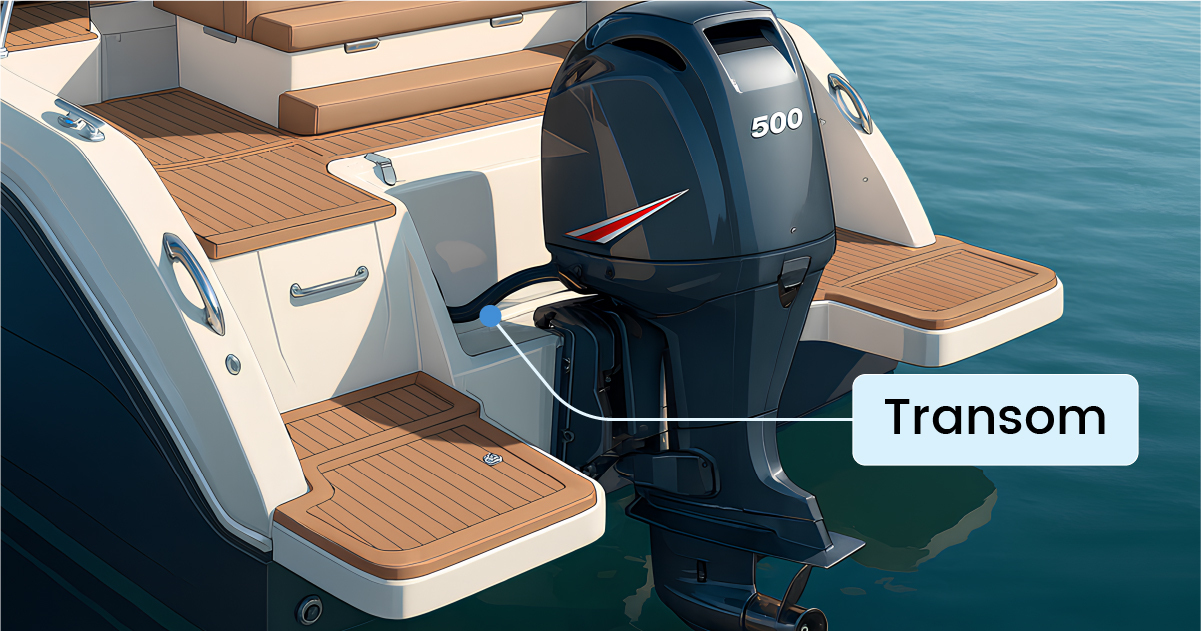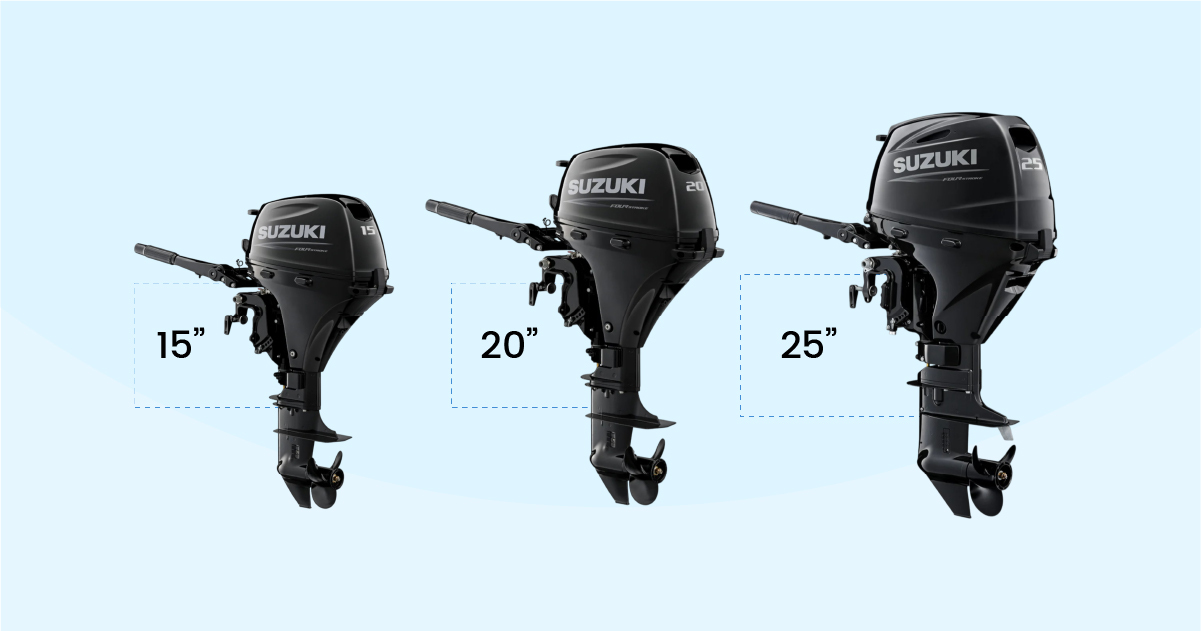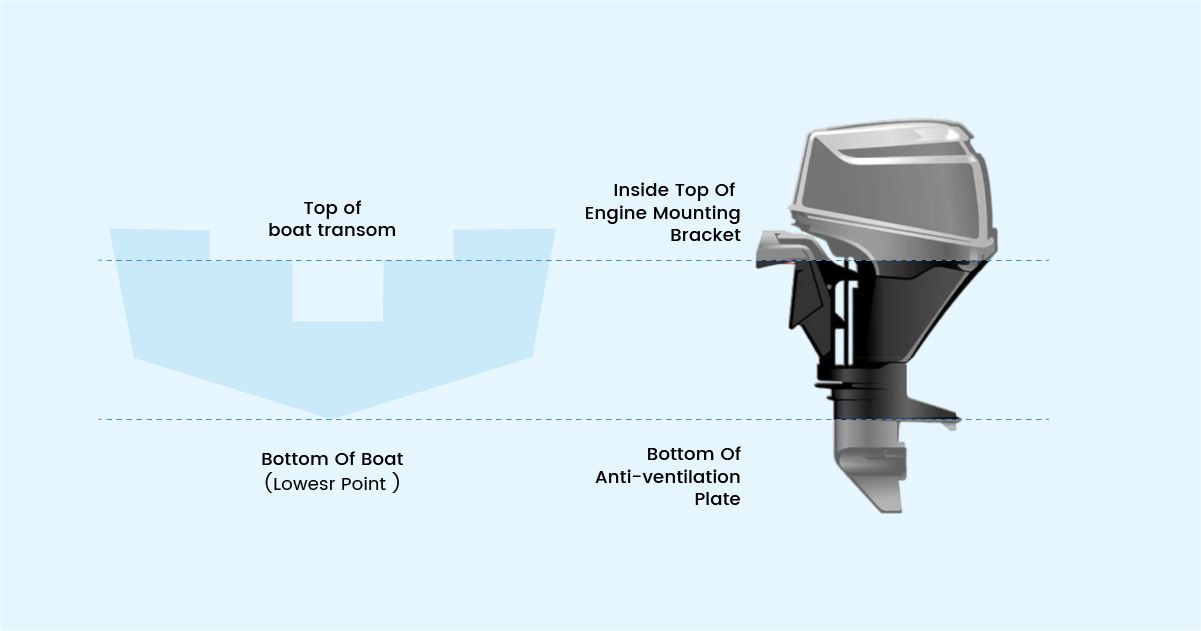Guide to Boat Transom Heights & Outboard Shaft Lengths
So, you bought a shiny new outboard motor, or maybe you’re eyeing one like it’s a trophy fish. But here’s the thing nobody tells you at the dealership: if your transom height doesn’t match the motor’s shaft length, you’re basically putting yourself in trouble. Poor performance, water spraying everywhere, and your engine throwing tantrums like a toddler in a toy aisle. Yeah, it’s that serious.
So many boat owners forget this one basic step… and then they’re left wondering why their boat handles like it’s dragging a brick. Matching the outboard shaft length with your boat’s transom height isn’t just another checkmark. It’s key. This small match-up helps you stay safer, save on fuel, and enjoy your expected ride when you got the boat in the first place.
In this guide, we highlight the shaft lengths, transom measuring tips, and what happens when you get it wrong. Let’s break it down like real boaters do.
Why Your Boat Transom Needs to be the Right Height?

A boat’s transom height is like the foundation of your boat; it must be right, or everything else goes wrong. Here's why getting this dimension right is crucial:
1. Performance and Speed
If your outboard’s propeller isn’t at the ideal depth in the water, performance suffers. Too deep, and you add unnecessary drag. Too shallow, and the propeller could ventilate, which led to poor acceleration and lower top-end speed.
Read: How to choose the right propeller for your outboard?
2. Fuel Efficiency
A misaligned motor forces your engine to work harder than it should. That means more gas burned, less range, and higher operating costs, something every boater wants to avoid.
Learn how to improve your boat's fuel efficiency.
3. Handling and Stability
An improperly mounted motor can throw off your boat’s balance. You may experience issues like:
- Porpoising (the bow bouncing up and down)
- Difficulty turning at higher speeds
- Increased cavitation or ventilation
- A stern that rides too low or high in the water
To overcome this, you need to fix your outboard motor problems.
4. Engine Safety
Mount the outboard too low, and water could get into the exhaust or even the engine cover. That kind of mistake can lead to real engine trouble. This also affects the lifespan of the outboard engine. But go too high, and the water intake might not stay underwater, causing the motor to overheat.
5. Boat Design Compatibility
Boat makers build the hull to work with a certain transom height. Changing that height messes with the balance. It can put stress on the frame and make the boat act differently in the water than it should.
Outboard Shaft Lengths - 15', 20', 25', & 30'

Outboard motors aren’t built in just one size. They come in several shaft lengths so they can work with different transom heights. Pick the wrong one and problems start. A short shaft can cause the propeller to spin in air instead of water. A long one? It drags more water than needed, which slows things down.
Shaft length matters because it helps line up the anti-ventilation plate (that flat fin above the propeller) right with the bottom of your boat. That’s where you get the best performance. Below, we’ll look at the common shaft sizes and when to use each one.
1. Short Shaft (15 inches)
- Ideal for: Small boats like inflatable dinghies, jon boats, narrow aluminum fishing boats, and lightweight skiffs.
- Transom height compatibility: Approximately 15 inches
- Common in: Low-horsepower engines (usually under 25 HP), often tiller-controlled and portable.
Short shaft outboards work best in calm, shallow water, like small lakes or slow backwaters. They’re light, easy to move around, and simple to mount, so weekend boaters and casual fishers love them. Folks using small boats that they can throw on top of their car really appreciate how handy these motors are. But if the boat’s transom is too high, the prop ends up too close to the surface. That’s when problems start. Air gets pulled in, the motor can’t push the boat properly, and you’ll notice a drop in performance fast.
Best Use Case: Lightweight boats operating close to shorelines, calm lakes, and shallow rivers.
2. Long Shaft (20 inches)
- Ideal for: Medium-sized boats such as V-hull aluminum boats, pontoon boats, center console boats, and small fiberglass runabouts.
- Transom height compatibility: Around 20 inches
- The most common shaft length for general recreational and family boating.
The long shaft outboard is the most versatile and widely used shaft size. It accommodates a broad range of boats and water conditions. Most modern boats are designed around a 20" transom, which makes this shaft length the default for many new engine setups.
You’re heading out on the lake, friends, laughter, maybe a little tubing or fishing from a good-sized boat. In that case, a long shaft outboard is likely what you’ll need. These are built for this kind of water fun.
Best Use Case: Recreational boaters, anglers, and families using standard-size boats on lakes, rivers, and coastal bays.
3. Extra-Long Shaft (25 inches)
- Ideal for: Larger boats like sailboats, deep-V hull offshore fishing boats, or commercial vessels that operate in choppy, rough water conditions.
- Transom height compatibility: Around 25 inches
- Purpose-built to maintain propeller submersion during wave action or in high-sitting vessels. You can repair your propeller yourself, too.
If your transom is higher than most, or if you're out on choppy water a lot, you’ll need an extra-long shaft. A regular 20" shaft won’t always stay submerged. When it pops out, the engine can cavitate, and suddenly, your steering isn’t so easy anymore.
Longer shaft motors are built stronger. They usually come with remote steering, electric start, and power trim. They're heavier, too. That’s why many sailboats use them. Sailboat transoms often sit far above the waterline, especially with gear onboard. The extra shaft length keeps the propeller in the water where it should be either it is of aluminium or stainless outboard propeller.
Best Use Case: Offshore and coastal waters where wave height could affect engine submersion; tall-transom boats like sailboats.
4. Ultra-Long / XX-Long Shaft (30 inches or more)
- Rare and Specific To: Heavy-duty commercial boats, deep-V hull catamarans, rescue or military boats, government patrol vessels, and multi-engine offshore boats.
- Transom height compatibility: 30 inches or higher
The 30"+ shaft length is not commonly used in recreational boating. It exists to accommodate boats with very high transoms, or multi-engine applications where engines are spaced and raised to suit particular mounting brackets or hull designs.
Some offshore boats use a twin-engine or triple-engine setup, with the engines staggered in height. The outer engines may need a longer shaft to keep the prop submerged due to hull curvature or trim angles.
These are big-power outboards, usually 150 HP or more. They handle open water well and are strong enough for rough environments. Because of that power, they need a reinforced transom and rigging designed for stability and control.
Use This Setup If You’re Into: Heavy-duty work, search and rescue, long ocean trips, or commercial fishing that doesn’t mess around.
Matching Transom Height to Shaft Length

Here’s where it usually goes sideways. You mess up the transom height and match it with the wrong outboard shaft, which causes the boat to not perform what it’s supposed to. You can also use an adjustable transom that fits all outboard motors.
Basic Rule of Thumb is to match the shaft length to the transom height to ensure the propeller is submerged at the correct depth for optimal performance and to avoid cavitation
| Transom Height | Recommended Shaft Length |
| 15" | Short Shaft (15") |
| 20" | Long Shaft (20") |
| 25" | Extra-Long Shaft (25") |
| 30" | Ultra-Long Shaft (30") |
What Happens When You Mismatch?
- Too short a shaft: The prop may sit too high, causing ventilation (air intake), cavitation (bubbles that reduce thrust), poor handling, and loss of speed.
- Too long a shaft: The lower unit sits too deep, causing unnecessary drag, reduced top speed, possible stern squatting, and an increased risk of hitting submerged objects.
Special Considerations
- Boats with pods or jack plates: These modify the effective transom height and need to be accounted for.
- Boat loading and weight distribution: A heavily loaded boat sits lower in the water, affecting how deep your prop runs.
- Water conditions: Offshore and rough-water boats often benefit from longer shafts to keep the prop submerged when bouncing over waves.
How to Measure Transom Height Accurately?
You can’t pair your motor with your transom unless you know exactly what height you’re working with. Here’s how to do it, First talk about what you'll need
- Tape measure or yardstick
- A level (optional but useful for accuracy)
- A flat surface or trailer for the boat
Step To Measure Transom Height
- Place the Boat on a Level Surface: Either use a trailer or ensure the boat is resting on even ground. This avoids skewing your measurement.
- Identify the Transom Center: Find the midpoint of the transom (not the corners, which might be higher or lower depending on design).
- Measure from the Top of the Transom to the Bottom of the Hull: Grab your tape measure and hook it right at the top edge where the motor’s going to sit. Now pull the tape down, not just to the inside bottom of the boat, but all the way to the keel underneath. If the back of your boat curves, don’t follow the curve. Keep the tape pointing straight down like it would in the water.
- Note the Measurement: Shaft lengths come in standard sizes: 15, 20, 25, and 30 inches. If your number’s in between, it’s not a big deal. A jack plate, bracket, or custom motor mount can help make it work.
FAQs
Can I use a longer shaft than my boat’s recommended height?
You can use the longer shaft; it will not damage the boat, but expect more drag, reduced top speed, and caution in shallow water since the prop sits deeper.
Which boats typically need a short‑shaft outboard?
Boats with a 15–17″ transom, which include small Jon boats, zodiacs, inflatables, canoes, and sailboats with movable brackets, need a short haft outboard.
Which vessels call for a long‑shaft engine?
Pontoon boats, Carolina skiffs, and other medium‑sized craft with 18–21″ aft transoms.
The Bottom Line
It’s not only about getting the numbers right. It’s about how your boat feels out there, how steady it stays, how smooth it rides, and how much control you really have. A few inches too short or long? You’ll feel it in every wave.
- Better speed and fuel economy
- Cleaner hole shots (faster planing)
- Easier steering and control
- Less strain on your motor and hull
- And ultimately, a safer boating experience
It is a small detail, but it makes a big difference out on the water.
Posted by Art Vandelay


